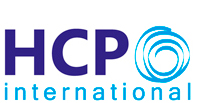TEMBO
Set up cost-effective innovative sensor networks that can be financed by climate services built on top of these networks.
Our Concept
Transformative new methods to measure five essential hydrological variables (rainfall, soil moisture, river flow, bathymetry) at less than 10% of current costs. These reduced costs are essential to have real business models for services that cover the costs of building and operating the networks. The five essential variables will be available through GEOSS.
Our Innovation
Seven new sensing methods have been introduced in Africa. The innovation does not focus only on moving up the Technology Readiness Levels of new measuring methods but, especially, on the usefulness and practical applicability of these methods in specific contexts. The direct linkage of sensors and new value-creating services is part of this innovation because this is essential for long-term financial sustainability. New services assimilate in situ and satellite data in numerical models to make optimal use of the strengths of different sources of information.
Why choose us
Six SMEs, three universities, two NGOs, and one meteorological agency. Network of 600+ ground weather stations in Africa, providing ready-to-use technical infrastructure.
Well-balanced and well-integrated task distribution.
Ambition contributes directly to call.
Lower cost of in-situ observation: This is central to the innovation of the project. The costs concern not just the initial costs but the total cost of ownership in the given African contexts, including the availability of local experts able to install and maintain equipment.
Improved geographical coverage of in situ sensors: Sub-Saharan Africa remains grossly underserved in terms of in situ observations with government resources simply not available for expansion.
Long-time series of in situ observations: The direct connection between sensors and service development ensures long-term financial sustainability.
New in-situ measurement technologies in hard-to-reach under-sampled areas: Seven new measurement methods will be introduced in Africa.
Collaboration with environmental observation data providers: Very close cooperation with six African hydrological and meteorological services.
Long-term ambition
The success of TEMBO Africa includes repetition of the proposed model, with in situ data feeding value-creating services that will ensure continued financial resources, branching out to different countries and environmental variables beyond water. We will break the vicious cycle of reduced investments leading to less service leading to fewer investments and, instead, build a virtuous cycle in which improved services attract additional investments.
![]()


